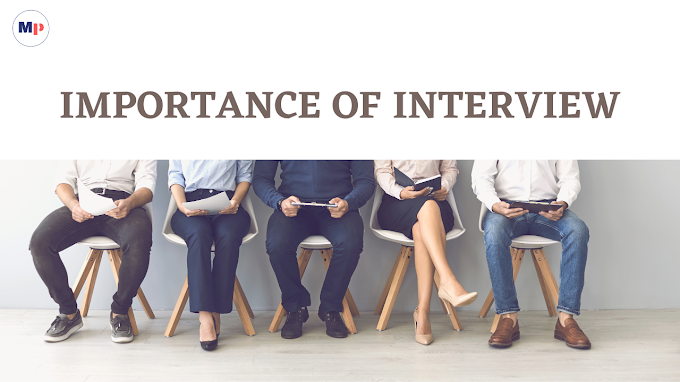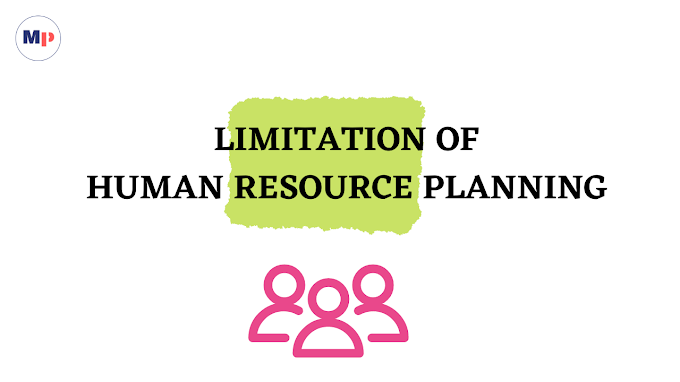
August 15 has a great significance in the history of India. India remained under the British for a long time and the people of India have paid every price to get this freedom. To achieve this freedom, many types of movements took place in the country and to make every movement successful, the countrymen put everything at stake. During this, many people also lost their lives and many were martyred due to the atrocities of the British rule. India freed itself from these Britishers on 15 August 1947. Since then, Independence Day has been celebrated in India on 15th August. At the time of this independence, India was divided into two parts by the British. After India's independence, Pandit Jawaharlal Nehru was installed as the first Prime Minister of India.
On this day, there is a holy festival-like atmosphere all over India. Flag raising programs are organized at places like schools, colleges, offices etc. A detailed description of this democratic festival is being done here.
Independence Day Essay/History
Indian independence has a very detailed history. Its history is full of movements and sacrifices. Around the 17th century, European merchants started building their outposts in India. Due to having all kinds of possibilities here, their business was established very well. Slowly he started deploying his military forces here as well. With time, their greed increased and they started trying to establish their power across the country. The Britisher established the East India Company in India. At this time, due to the weakening of the Mughal Sultanate in India, the British easily started making their hold in India. Some of the special wars of this time are being described below.
- In 1757, the army of Siraj-ud-Daula, the Nawab of Bengal, fought with the army of the British East India Company and Siraj was defeated in this war. After this the British East India Company completely took hold in India.
- The British also got success during the Battle of Buxar in 1764, due to which the British rule dominated the administration of Bengal, Bihar and Orissa.
Revolution of 1857:
The revolution of 1857 has great importance in the Indian freedom struggle. Many historians believe that this revolution was the first war of independence from the British in India. This fight was completely against the Britishers. It is believed that this revolution started by the rebellion of Mangal Pandey. He was a soldier in the British Regiment. The cartridges used here used to contain the fat of cow's meat. Mangal Pandey refused to use this cartridge because of this and started a rebellion against the British army to save the cow. He killed the highest officer of the Barrackpore Regiment in this rebellion. This incident ignited the flame of revolution among all the exploited Indian people and spread like fire in the whole country, but revolutionary Mangal Pandey's life came to an end because the Britisher sentenced him to death, so that he would fight for freedom – They were martyred fighting, and due to lack of better plans, this revolution failed.
Planned Important Revolutions:
Many planned revolutions were started again to drive out the British from India. Work was started to make people aware of the political situations and to make them aware. Many types of institutions were being established during this time. Dadabhai Naroji founded the East India Association in 1867, and Surendranath Banerjee founded the Indian National Association in 1876. With the help of these institutions, the work of bringing unity among the people was started. During this time the Indian National Congress was established in 1885. Many immediate veteran leaders were involved in the Indian National Congress. The Civil Disobedience Movement, Champaran Satyagraha, Dandi March, Quit India Movement were held under the leadership of Mahatma Gandhi. The roots of the British rule started to shake with these movements.
Famous Freedom Fighters of Indian Freedom Movement
People of every caste, religion and section of the country took part in the Indian independence movement. The names of those who took up the responsibility of leading these people are often remembered. Along with Mahatma Gandhi, Lala Lajpat Rai, Bal Gangadhar Tilak, Gopalkrishna Gokhale, Shri Aurobindo Ghosh, Netaji Subhash Chandra Bose, Bhagat Singh, Chandrashekhar Azad, Surya Sen, Batukeshwar Dutt etc. were in these freedom movements. Although among them Bhagat Singh, Chandrashekhar Azad, Batukeshwar Dutt etc. were not ready to follow the non-violent path of Mahatma Gandhi, they wanted India's independence at any cost. Similarly, Netaji Subhash Chandra Bose also prepared his own path for the Indian freedom struggle and established the Azad Hind Fauj. Azad Hind Fauj was an army organized by Netaji Subhash Chandra Bose, which worked to liberate India from British rule. This army had an alliance with Japan because Japan was fighting against the British government during World War II. Azad Hind Fauj fought with British forces along with Japanese army at places like Burma, Imphal, Kohima etc.
Women in Indian Independence Movement:
In this war against the British rule, the women of India also participated with great noise. This partnership started coming in the eyes of the people from the time of Maharani Laxmibai. The names of the main women who contributed to the Indian independence movement are Mrs. Sarojini Naidu, Sister Nivedita, Mrs. Annie Besant, Matangini Hazra etc.
Indian Independence Movement and Renaissance:
During the Indian independence movement, the British rule was trying to rule the country by dividing the people on the basis of caste religion. He constantly tried to create division in the Hindu Muslim unity of the country. At this time, the king and many great men contributed to give a new direction to the society. The prominent names of this period were Raja Rammohan Roy, Sri Ramakrishna Paramhansa, Sri Jagadishchandra Bose, Rabindranath Tagore, Swami Vivekananda, Dwijendra Lal Roy, Qazi Nazrul Islam etc.
Situation in India immediately before Independence
Before independence, the demand for Poorna Swaraj was placed before the British rule on behalf of the Indian National Congress. Meanwhile, India's independence was celebrated on 26 January. At the same time, the Congress appealed to the people of India to contribute to the civil disobedience movement. A large number of Indians participated in this movement and made the movement successful. Due to various types of movements, the British government started to feel that it is difficult for them to rule India now. At this time the British government started to weaken.
After this, from 1930 to 1946, the Indian National Congress celebrated Independence Day on 26 January itself. Due to the celebration of this Independence Day, there was a zeal to achieve independence among the people of India. Following are the various revolutions taking place at this time.
Civil disobedience movement:
Civil disobedience movement was a movement started by Mahatma Gandhi, in which many programs were done such as breaking the salt law, boycott of government institutions and education centers, picketing by women themselves in liquor and opium shops, boycott of foreign goods and payment of taxes. to stop etc. Gandhiji was agitating for the removal of the British government's ban on salt. The British had made such a law in India that no Indian could buy salt here and no Indian could sell it. On 12 March 1930, Mahatma Gandhi, along with his 78 followers, covered a distance of about 200 miles from Sabarmati to Dandi and finally broke the salt law made by the British by making salt from the sea water of Dandi. This is how this movement started, for which Mahatma Gandhi had to go to jail. It is also called the salt movement. After this the above programs were also done.
Quit India Movement:
It was started by Mahatma Gandhi by writing an article in 'Harijan Patrika'. This movement started on 9 August 1942. Mahatma Gandhi gave the slogan of 'Do or Die' to the Quit India Movement. Although Mahatma Gandhi wanted to complete this movement by following the path of non-violence, but very soon the dam of patience of the common people was broken and somewhere this movement was also done in a violent way.
Why is Independence Day celebrated in India?
There were some reasons for India getting independence. The first reason for this was that recently the Second World War had ended. Britain was facing many problems in this war. His economy had weakened. In World War II, the people of India were forcibly recruited and sent to fight in the British Army. Whereas India had no role in World War II. Because of this, resentment was increasing among the people here about this matter as well. The freedom struggle had broken out almost everywhere in the country. The British government was battered in every way and was completely unable to keep the Indian people under its control. People from almost every region of the country started revolting against the government.
In view of these conditions, in February 1947, Clement Attlee decided that the British government would hand over all the power of India to the Indian leaders on June 1948. However, after this Lord Mountbatten came as the new Viceroy of India. Lord Mountbatten chose 15 August for India's independence as the second anniversary of Japan's surrender at the time of World War II. On June 3, 1947, the British government announced the partition of India, after which, under the Indian Independence Act 1947, British India was divided into two parts, Hindustan and Pakistan. The British left India on the night of 14 August 1947 and India gained independence on 15 August 1947. In this way, India has been celebrating this day as Independence Day since then.
Importance of Indian Independence Day
The importance of Indian Independence Day is more than life in the lives of Indians. On this day India got freedom from the shackles of British rule. To get freedom for India, many revolutionaries contributed in their own way in the revolution of the country. 15 August 1947 was like a rebirth for India. It was the result of the movements made in the previous years that the British government had succumbed to the Indians. On this day, for the first time formally, the first Prime Minister of India, Shri Jawaharlal Nehru hoisted the tricolor of India at the Red Fort of India and addressed the countrymen. On this day, the people of the country felt for the first time that India would once again be able to progress on the path of becoming a Vishwaguru. On this day, the eyes of the people of all caste religions living in the country bow down with reverence for the heroes and heroines, who laid down their lives for the freedom of this country. That's why this day has a lot of importance in people's lives.
How to Celebrate Independence Day
Independence Day in India is celebrated with great pomp across the country. It is celebrated in the following way:-
- On this day all people irrespective of their religion, caste come together under the tricolor. On this day, the immediate Prime Minister of the country hoists the tricolor at the Red Fort in Delhi and addresses all the Indians from there.
- After the flag hoisting, the national anthem is sung across the country. On this occasion, a 21-gun salute is given to the flag.
- On this day, programs based on different cultures of the country are organized in many government and non-government institutions of the country and the great freedom fighters of the country are remembered. Many big institutions are made fully equipped.
- Various programs are organized on the highway of Delhi on this day. In this event, the soldiers of the three main armies of India, Navy, Army and Air Force show their feats.
- On this day, similar events are organized in all the states of India, where the Chief Minister of the state puts his statement in front of the people.




